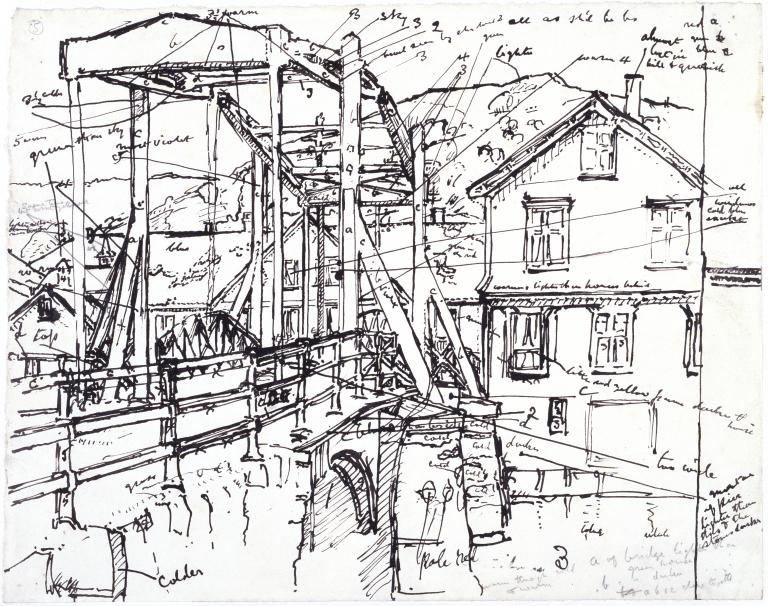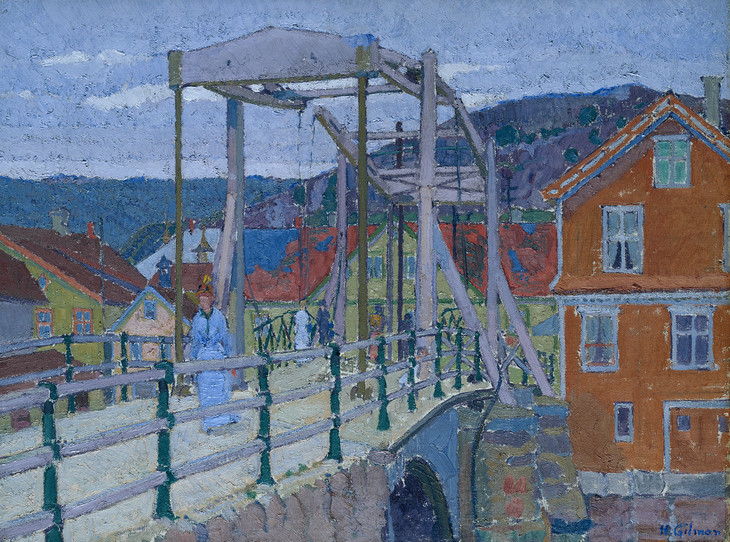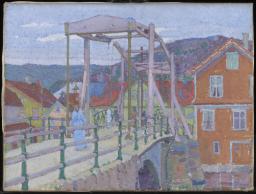The preparatory Study for ‘Canal Bridge, Flekkefjord’ is an annotated sketch executed in black ink, possibly Indian ink, on white handmade laid paper. The paper is of good quality and bears part of a watermark ‘...d & Co’. The uneven decal edge of the original sheet is retained along the top and left-hand sides of the paper, while the right and bottom edges have been cut to produce the required size of paper.
Gilman added extensive notes in pencil and ink to record colour values – his prime interest – and explain some of the forms. Many of these notes are words, such as the record of the colours on the side of the bridge – ‘blue’, ‘cold’, ‘pale red’ – which have been followed carefully in the final painting. Other notes are in the form of single letters – ‘a’, ‘b’ or ‘c’ – and numbers – ‘1’ through to ‘5’. These also relate to ranges of tone and hue values. He incorporated some more detailed notations describing the comparative values of similarly coloured elements – ‘a of bridge lighter on green house’, ‘all windows cold blue except’ (here a line indicates the windows in the green house in the centre).
The finished oil is slightly different in composition to the drawing, the bridge being placed more at the centre in the painting. It is less than half the size of the painting and unlike other final preparatory drawings by Gilman it has not been squared-up for transfer. It seems likely, therefore, that this drawing was not the final study before the oil was made.
Tomoko Kawamura and Sarah Morgan
June 2004
How to cite
Tomoko Kawamura and Sarah Morgan, 'Technique and Condition', June 2004, in Robert Upstone, ‘Study for ‘Canal Bridge, Flekkefjord’ c.1913 by Harold Gilman’, catalogue entry, May 2009, in Helena Bonett, Ysanne Holt, Jennifer Mundy (eds.), The Camden Town Group in Context, Tate Research Publication, May 2012, https://www.tate.org.uk/art/research-publications/camden-town-group/harold-gilman-study-for-canal-bridge-flekkefjord-r1136017, accessed 13 December 2025.




